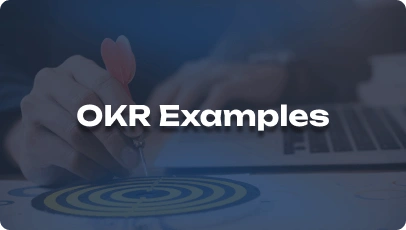Interior design plays a crucial role in creating functional and aesthetically pleasing spaces that enhance people’s experiences. As a Senior Interior Designer, mastering this role involves a deep understanding of design principles, materials, and industry trends. Success in this position requires the ability to lead projects, collaborate effectively, and stay updated on modern practices and technologies shaping the industry.
1. Can you discuss a recent interior design project you led from concept to completion?
I led the redesign of a commercial office space, focusing on maximizing natural light and incorporating biophilic design elements to enhance employee well-being.
2. How do you stay updated on the latest trends and technologies in interior design?
I regularly attend industry conferences, follow design publications, and participate in online forums to stay informed about emerging trends and technologies.
3. What software tools do you use for interior design projects, and why?
I use AutoCAD for drafting, SketchUp for 3D modeling, and Adobe Creative Suite for presentations because they allow for efficient design development and visualization.
4. How do you approach balancing functionality and aesthetics in your design projects?
I prioritize understanding the client’s needs and the space’s intended use to ensure that the design not only looks appealing but also functions effectively for its users.
5. Can you discuss a time when you had to resolve a conflict with a team member or client during a project?
During a project, I addressed differing design preferences with a client by presenting alternative solutions and facilitating open communication to reach a consensus without compromising the project’s integrity.
6. How do you incorporate sustainability practices into your interior design projects?
I source eco-friendly materials, prioritize energy-efficient systems, and design spaces that promote sustainability and reduce environmental impact.
7. What challenges do you anticipate when working on a tight budget for an interior design project?
When working with a limited budget, I focus on strategic spending, value engineering, and prioritizing essential design elements to deliver a high-quality outcome within financial constraints.
8. How do you approach collaborating with architects and other professionals on integrated design projects?
I believe in fostering open communication, mutual respect, and a collaborative mindset to ensure seamless coordination and integration of different design disciplines for a cohesive project outcome.
9. In your opinion, what role does technology play in the future of interior design?
Technology will continue to revolutionize interior design through virtual reality, artificial intelligence, and smart home integration, offering new ways to visualize, create, and experience spaces.
10. How do you ensure that your interior design projects reflect the brand identity and values of your clients?
I conduct thorough research on the client’s brand, culture, and values to inform the design concept, colors, materials, and spatial configurations that align with their identity and messaging.
11. Can you discuss a time when you had to adapt your design approach to meet changing client requirements?
When a client requested a shift in design style midway through a project, I facilitated a transparent discussion, adjusted the design direction, and presented revised concepts that met their evolving needs.
12. How do you approach creating inclusive and accessible interior spaces for diverse user groups?
I consider universal design principles, accessibility standards, and user experience research to ensure that interior spaces are welcoming, functional, and accommodating for people of all abilities and backgrounds.
13. What strategies do you use to effectively manage multiple interior design projects simultaneously?
I prioritize project timelines, delegate tasks efficiently, maintain clear communication with team members and clients, and utilize project management tools to ensure smooth project progression and successful outcomes.
14. How do you incorporate cultural influences and local context into your interior design projects?
I conduct in-depth research on the cultural heritage, traditions, and architectural styles specific to the project location to integrate meaningful cultural references, materials, and design elements that resonate with the local context.
15. Can you share your approach to selecting furniture, fixtures, and finishes for interior design projects?
I consider the design concept, functionality, quality, sustainability, and budget parameters when selecting furniture, fixtures, and finishes to ensure cohesiveness, durability, and aesthetic appeal in the final design.
16. How do you handle feedback and critique on your design proposals?
I view feedback as an opportunity for growth and improvement, actively seek constructive criticism, and engage in dialogue with stakeholders to refine design solutions and meet project objectives effectively.
17. What role does lighting design play in creating impactful interior spaces?
Lighting design significantly influences the mood, functionality, and visual impact of interior spaces by enhancing architectural features, creating focal points, and establishing ambiance that complements the overall design concept.
18. How do you approach creating sustainable and healthy indoor environments in your design projects?
I focus on optimizing natural light, indoor air quality, thermal comfort, and material selection to create environmentally friendly, energy-efficient, and health-promoting interior spaces that prioritize occupant well-being.
19. Can you discuss a challenging aspect of project management in interior design and how you overcame it?
Managing tight project timelines while ensuring design quality was challenging. I implemented detailed scheduling, efficient task delegation, and regular progress tracking to meet deadlines without compromising design excellence.
20. How do you incorporate user experience design principles into your interior design projects?
I prioritize user research, ergonomics, wayfinding, and spatial flow to design interior environments that enhance user comfort, efficiency, safety, and overall experience based on human-centered design principles.
21. What strategies do you use to ensure that interior design projects are completed within budget and on schedule?
I establish clear project scopes, conduct thorough cost analysis, monitor expenses closely, and proactively address any deviations from the budget or timeline through effective communication and strategic adjustments.
22. How do you approach designing for sustainability without compromising the aesthetic appeal of a space?
I integrate sustainable design practices seamlessly into the overall aesthetic vision by selecting eco-friendly materials, energy-efficient systems, and green technologies that enhance the beauty and functionality of the space while minimizing environmental impact.
23. Can you discuss a time when you had to navigate conflicting design preferences between stakeholders in a project?
During a project, I facilitated productive discussions, presented design options that addressed different perspectives, and collaborated with stakeholders to find a balanced solution that satisfied everyone’s requirements and preferences.
24. How do you approach integrating technology, such as smart home systems, into your interior design projects?
I collaborate with technology experts to integrate smart home systems seamlessly into the design, considering user interface, connectivity, automation, and sustainability to enhance the functionality and convenience of interior spaces.
25. What strategies do you use to create versatile and flexible interior spaces that can adapt to changing needs?
I design modular furniture layouts, flexible zoning, and adaptable systems that allow interior spaces to evolve and accommodate different functions, activities, and user preferences over time without major renovations.
26. How do you ensure that interior design projects comply with building codes, regulations, and safety standards?
I conduct thorough research on local building codes, accessibility requirements, fire safety regulations, and health standards to ensure that interior design projects meet all legal and safety compliance measures without compromising design integrity.
27. Can you share your approach to creating biophilic design elements in interior spaces?
I incorporate natural elements, such as greenery, natural light, water features, and organic materials, to establish connections with nature, improve indoor air quality, reduce stress, and enhance well-being in interior environments based on biophilic design principles.
28. How do you approach designing for acoustics and sound control in interior spaces?
I analyze the acoustic requirements of the space, consider sound-absorbing materials, strategic layout configurations, and sound masking techniques to minimize noise disruptions, enhance speech intelligibility, and create comfortable auditory environments in interior spaces.
29. What strategies do you use to create a cohesive design narrative that tells a story in interior spaces?
I develop a design concept inspired by the project’s context, history, and purpose, curate visual elements, textures, colors, and furnishings that support the narrative, and create a cohesive, harmonious environment that resonates with users on an emotional level.
30. How do you approach conducting post-occupancy evaluations to assess the success of your interior design projects?
I gather feedback from clients, occupants, and stakeholders, analyze user interactions, performance metrics, and space utilization data, and use the insights to evaluate the effectiveness of the design solutions, identify areas for improvement, and inform future design decisions.






